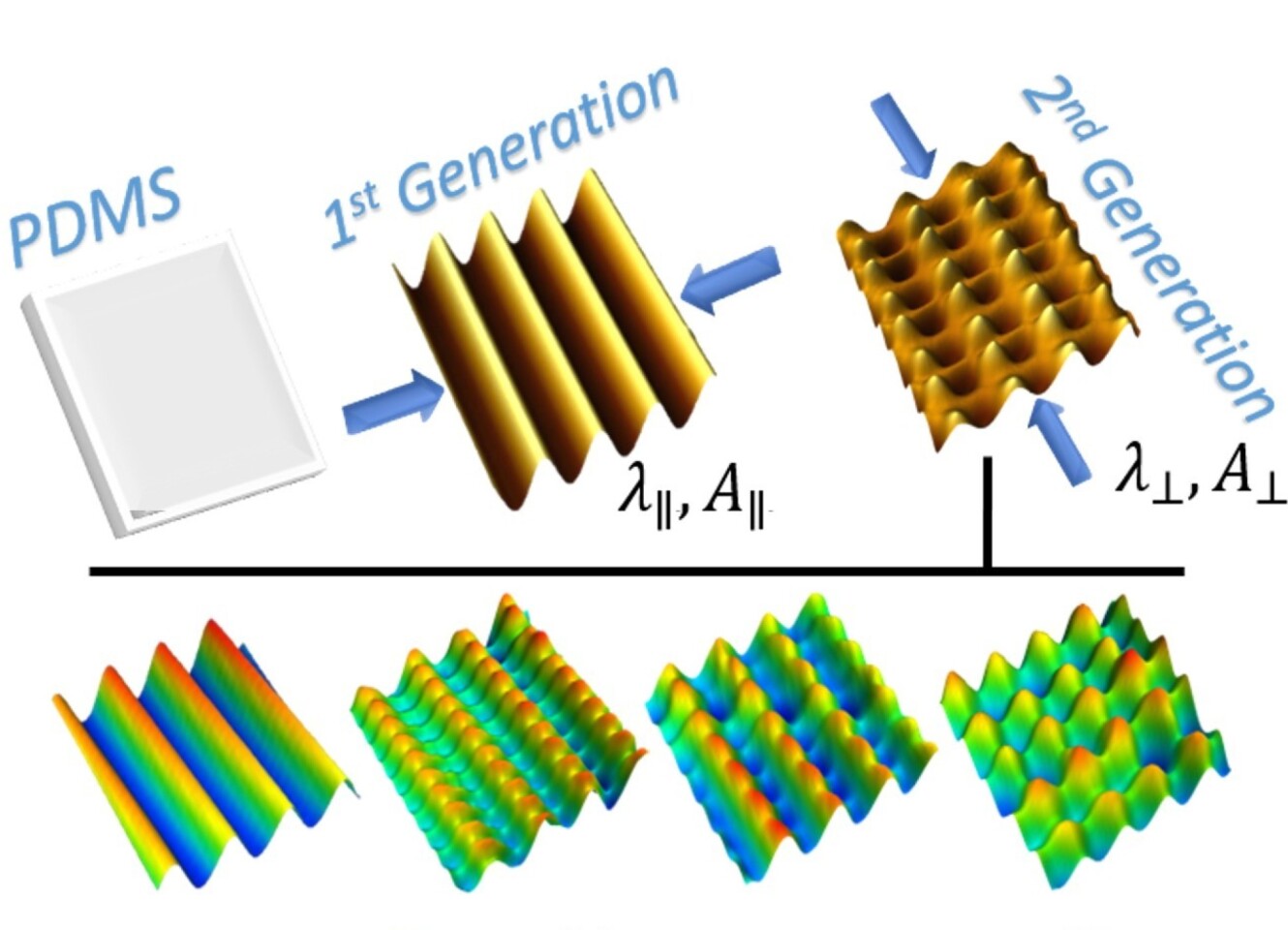Researchers at Imperial College London have developed a simple new way to make materials with intricate nanoscale textures on their surfaces, all inspired by nature. Different patterns can have a range of applications, like making antimicrobial surfaces or helping ships glide through the water with less friction.
The team started with a mineral-organic polymer called polydimethylsiloxane (PDMS). Stretching and compressing a thin film of this material in different ways allowed them to create a variety of nanoscale and microscale patterns, including waves, ripples and spikes. Each of these patterns can be useful for different applications.
The spiky structure, for instance, was inspired by the texture of the wings of insects like cicadas and dragonflies, which are naturally antibacterial. Intriguingly it’s not the spikes themselves that pop the bacteria – it’s the spaces between them. The dull spikes are just the right distance apart that when bacteria land on them, part of their bodies will sag into the gaps, stretching and eventually rupturing their outer membranes.
Mimicking this phenomenon could make antibacterial surfaces or coatings for door handles, surgical tools, medical implants, kitchen utensils, or anything else that needs to be sterilized regularly. This would be an important weapon in the fight against antibiotic-resistant bacteria.

Imperial College London
Another structure uses horizontal ridges that resembles the texture of shark skin. This reduces drag to help the animals glide through the water, which could prove useful for ship hulls. A third possibility is structural colors like that of butterfly wings or peacock feathers. These patterns can reflect and bend light in such a way as to produce brilliant colors without pigment, meaning they never fade, which could be useful for a range of things.
“The idea is compelling because it is simple: by mimicking the surface waves found in nature, we can create a palette of patterns with important applications,” said Luca Pellegrino, first author of the study. “Through this work we can also learn more about the possible origins of these natural forms – a field called morphogenesis.”
The team says that the new production method for these nanotextures is easier and less expensive to scale up than existing techniques, which usually involve etching surfaces with lasers.
Next, the researchers plan to test out how well these surfaces work at repelling bacteria in real-world settings, such as surfaces in buses.
The research was published in the journal Physical Review Letters.
Source: Imperial College London
Source of Article